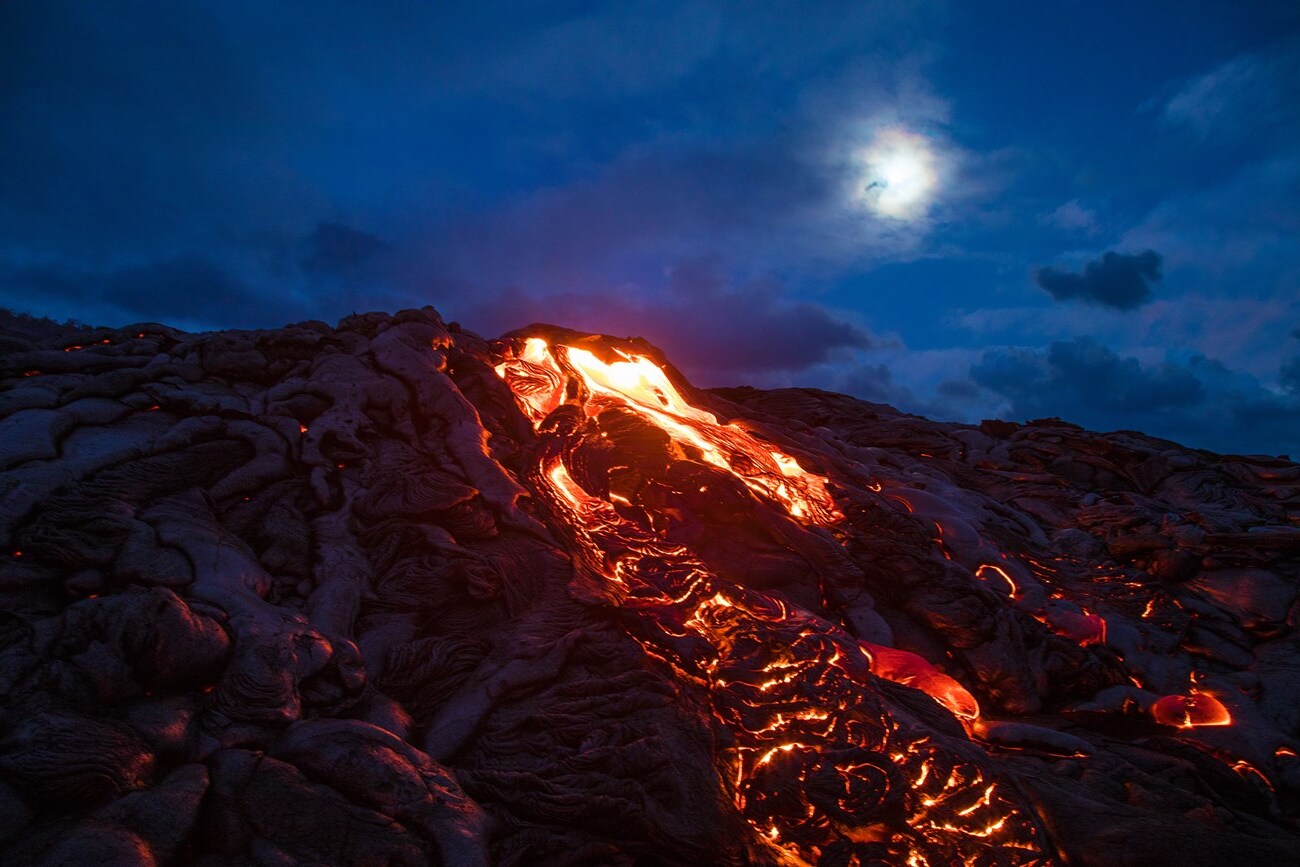
Shield volcanoes are some of the most fascinating geological formations on Earth. Unlike their explosive cousins, these giants have gentle slopes formed by the flow of low-viscosity lava. Hawaii's Mauna Loa and Mauna Kea are prime examples, towering above the ocean floor. But what makes them so unique? Shield volcanoes are built almost entirely of fluid lava flows, creating their broad, shield-like shape. They can grow to immense sizes, both in height and width. These volcanoes are not just found on Earth; they also exist on other planets like Mars. Understanding these natural wonders helps us appreciate the dynamic processes shaping our world. Ready to learn more? Here are 32 intriguing facts about shield volcanoes that will blow your mind!
What are Shield Volcanoes?
Shield volcanoes are fascinating geological formations. They are named for their broad, shield-like shape, which is created by the flow of low-viscosity lava. These volcanoes have gentle slopes and can cover large areas.
- Shield volcanoes are primarily composed of basalt, a type of lava that flows easily.
- They are the largest type of volcano on Earth by volume.
- The Hawaiian Islands are home to some of the most famous shield volcanoes, including Mauna Loa and Kilauea.
- Shield volcanoes have a low profile, resembling a warrior's shield lying on the ground.
- The eruptions of shield volcanoes are typically non-explosive, making them less dangerous than other types of volcanoes.
Formation and Structure
Understanding how shield volcanoes form and their structure can provide insight into their unique characteristics.
- Shield volcanoes form over hotspots, where magma from deep within the Earth rises to the surface.
- They can also form along mid-ocean ridges, where tectonic plates are pulling apart.
- The lava that creates shield volcanoes is low in silica, which allows it to flow easily and spread out over large areas.
- Shield volcanoes have a central vent or a series of vents from which lava flows.
- The gentle slopes of shield volcanoes are due to the low viscosity of the basaltic lava.
Famous Shield Volcanoes
Some shield volcanoes have gained fame due to their size, activity, or location.
- Mauna Loa in Hawaii is the largest shield volcano on Earth.
- Kilauea, also in Hawaii, is one of the most active volcanoes in the world.
- Olympus Mons on Mars is the tallest shield volcano in the solar system.
- Fernandina Island in the Galápagos is home to an active shield volcano.
- Surtsey, an island off the coast of Iceland, was formed by a shield volcano eruption in 1963.
Eruption Patterns
The way shield volcanoes erupt is quite different from other types of volcanoes.
- Eruptions are typically effusive, meaning lava flows out steadily rather than exploding.
- These eruptions can last for long periods, sometimes years.
- The lava flows can travel great distances due to their low viscosity.
- Shield volcano eruptions can create lava tubes, which are tunnels formed by flowing lava.
- The eruptions can build up the volcano over time, creating its broad, shield-like shape.
Environmental Impact
Shield volcanoes can have significant effects on their surroundings.
- The lava flows can destroy everything in their path, including vegetation and human structures.
- However, the lava also creates new land as it cools and solidifies.
- The eruptions can release gases like sulfur dioxide, which can affect air quality.
- Over time, the lava can break down into fertile soil, supporting new plant growth.
- Shield volcanoes can also create unique ecosystems, such as those found in the Hawaiian Islands.
Human Interaction
People have lived near and interacted with shield volcanoes for centuries.
- Indigenous Hawaiians have a rich cultural history connected to the volcanoes.
- Modern scientists study shield volcanoes to understand volcanic activity and predict eruptions.
- Tourism is a significant industry in areas with active shield volcanoes, like Hawaii.
- Some shield volcanoes are located in remote areas, making them difficult to study.
- Efforts are made to monitor these volcanoes to protect nearby communities.
Interesting Tidbits
Here are some additional fun facts about shield volcanoes.
- The name "shield volcano" comes from the Old Norse word "skjöldr," meaning shield.
- Shield volcanoes can be found on every continent, though they are most common in oceanic regions.
Final Thoughts on Shield Volcanoes
Shield volcanoes, with their broad, gentle slopes, offer a fascinating glimpse into Earth's geological processes. These giants, formed by low-viscosity lava, create some of the largest landforms on our planet. Unlike their explosive counterparts, shield volcanoes typically produce slow-moving lava flows, making them less dangerous but equally captivating. From Mauna Loa in Hawaii to Olympus Mons on Mars, these natural wonders showcase the power and beauty of volcanic activity. Understanding shield volcanoes helps us appreciate the dynamic nature of our planet and the forces that shape it. Whether you're a budding geologist or just curious about Earth's wonders, these facts provide a solid foundation for further exploration. Keep learning, stay curious, and remember, the world beneath our feet holds endless mysteries waiting to be uncovered.
Was this page helpful?
Our commitment to delivering trustworthy and engaging content is at the heart of what we do. Each fact on our site is contributed by real users like you, bringing a wealth of diverse insights and information. To ensure the highest standards of accuracy and reliability, our dedicated editors meticulously review each submission. This process guarantees that the facts we share are not only fascinating but also credible. Trust in our commitment to quality and authenticity as you explore and learn with us.


